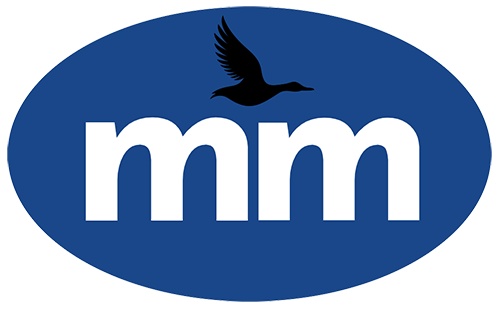Today Eurobodalla Shire Council voted not to commit to or resolve any action on a Net Zero Action Plan in a Motion brought By Cr Alison Worthington.
The MOTION was
“THAT Council:
- Acknowledges the NSW legislation, Climate Change (Net Zero Future) Act 2023, which legislates State emissions reduction targets to achieve net zero emissions by 2050, and the obligations of council to meet the regulations relating to that Act.
- Note the work of the Canberra Region Joint Organisation (CRJO) Net Zero Accelerator Program (NZAP), which aims to assist member councils accelerate emissions reduction and set milestones to achieve net zero emissions.
- Note that councillors are aware of the content of the CRJO Net Zero Accelerator Program presentation given in February 2024, and the recording shared with councillors.
- Commits to implementing the actions in the Net Zero Council Guide and the 31 Net Zero Milestones prepared by the NZAP to assist council to improve its emissions data capture and account for their emissions data and actions in emissions reduction.
- Resolve to develop a Net Zero Action Plan that provides a roadmap to achieve net zero emissions by 2050. “
Several Councillors sought to defer the motion for the next Council (after the elections) as it could incur costs and that they didn’t have all the information.
Cr Worthington responded: “sorry Councillors, but you have been briefed on this and there has been a huge amount of work done…and it has all been provided to Councillors.
“while I hear you about the costs, I’m more concerned about the costs of not acting.”
After considerable debate the Motion was to defer the motion until the November meeting.
Earlier in Public Forum, South Coast Health and Sustainability Alliance (SHASA) President Kathryn Maxwell addressed Council on the matter saying:
“While the Council has set itself non-binding emissions reduction targets, SHASA strongly supports the NSW Government’s Climate Change Net Zero Futures legislation as it is a binding target to achieve State emission reduction targets to achieve net zero emissions by 2050. Most importantly it obligates that all Councils including the Eurobodalla Shire Council meet the regulations relating to that Act.”
(FULL Submission HERE)
Just as the meeting was taking place a relevant NSW Government announcement dropped into my inbox titled “Latest climate change data helps NSW withstand the heat.”
Media Release
“The NSW Government has released updated Climate Change projections to help governments, agencies, businesses, landholders and communities plan and adapt to the future climate.
They illustrate the need for further action to reduce emissions and for informed planning to improve the resilience of households, communities and businesses to the impacts of climate change, such as extreme weather patterns.
The third version of the NSW and Australian Regional Climate Modelling (NARCliM) forecasts climate outcomes for NSW, based on global emissions scenarios. Earlier versions were released in 2014 (NARCliM 1.0) and 2021 (NARCliM 1.5).
Available at fine (4km) scale for south-east Australia and coarser (20km) scale over Australasia, the updated set of climate projections are among the most detailed available in the country.
NARCliM 2.0 projects that by the year 2100, NSW can expect:
- increased average temperatures in all parts of NSW, with the greatest rises inland,
- more hot days of 35°C and above for all regions across the state,
- fewer cold nights below 2°C, particularly along the Great Dividing Range, and
- more extreme weather events including severe fire weather days for all of NSW by 2050.
The updated data models two greenhouse gas emissions scenarios and what the climate in NSW is projected to look like under each. It is the first time NARCliM has provided low emissions scenario projections that show the benefits to NSW of achieving the Paris targets.
By 2090, under a low emissions scenario, temperatures are projected to increase by a further 1.3°C and there would be up to an additional 15 days above 35°C each year.
Under a high emissions scenario, temperatures are projected to rise by a further 4°C and there would be up to 45 days above 35°C.
This shows why further action to reduce greenhouse gas emissions is crucial to reducing the impacts of climate change that are damaging to health, the environment and the economy.
The NARCliM projections provide robust and trusted information about our future climate which will be used to inform risk assessments, planning and research into the threats facing NSW and how we can improve climate resilience.
Minister for Climate Change and the Environment Penny Sharpe said “The data shows two clear options – we can do nothing which will lock in more extreme weather events in the future, or we can reduce emissions now to play our part in limiting the damage.
“We can’t plan for the future without the best data. That’s what NARCliM provides. Government agencies, businesses, farmers and local decision makers can now access updated climate projections to make informed decisions about the steps they should take to prepare for the changing climate.
“This data will help protect critical infrastructure including hospitals, transport networks, dams and energy systems from climate change impacts such as extreme heat, fires and floods.
“The Minns Labor Government is taking strong action on climate change to reduce emissions, make our communities and environment more resilient to extreme weather events, and ensure our economy is strong, robust and built on local, secure jobs.”
The data reinforces the Minns Labor Government’s decision to make action on climate change a whole of government priority, enshrine emissions reduction targets in law, and legislate an adaptation objective for NSW to be more resilient to a changing climate.
NARCliM climate projections are led by the NSW Government with the support of the ACT, South Australian, Victorian, and Western Australian governments, National Computational Infrastructure, Murdoch University and the University of NSW.
The update is a commitment of the NSW Government under the NSW Climate Change Adaptation Strategy.”

